Sometimes seamstresses prefer to work on old sewing machines that have stood the test of time. Many models are in no way inferior to modern technology and are capable of sewing on the densest fabrics. The Chaika-143 sewing machine deservedly remains popular among lovers of home sewing. Despite the abundance of new manufacturers and models, this device is not inferior in functionality to new expensive options.
Purpose
The Chaika 143 sewing machine is similar in design and functionality to other representatives of the Chaika series of models. But it is one of the most popular. Operating instructions are often combined. And they can be used by owners of other similar models, for example, the Chaika 143 a sewing machine. What is the secret of the Chaika?
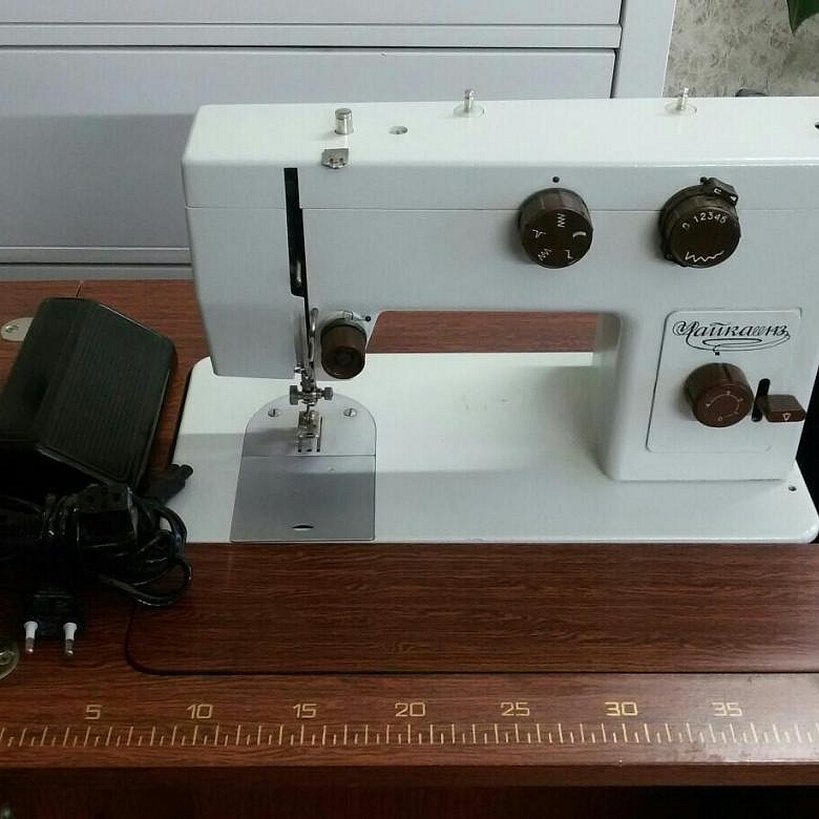
Users do not stop working on old sewing machines. Their secret is that you can use most fabrics for sewing. Modern models are divided into classes by power type. Not everyone can work with heavy materials. Even with denim. A device that will sew fabrics with such density is expensive.

"Chaika 143" is a sewing machine for home use. But you can create real masterpieces on it. What fabrics does the device take:
- cotton;
- linen;
- synthetic and silk.
You can also darn or embroider on the listed fabrics.
Important! One of the main conditions for the machine to work is the correct installation of the needle. Without it, the device will not work. This applies to threading. Therefore, before starting to use it, be sure to read the instructions.
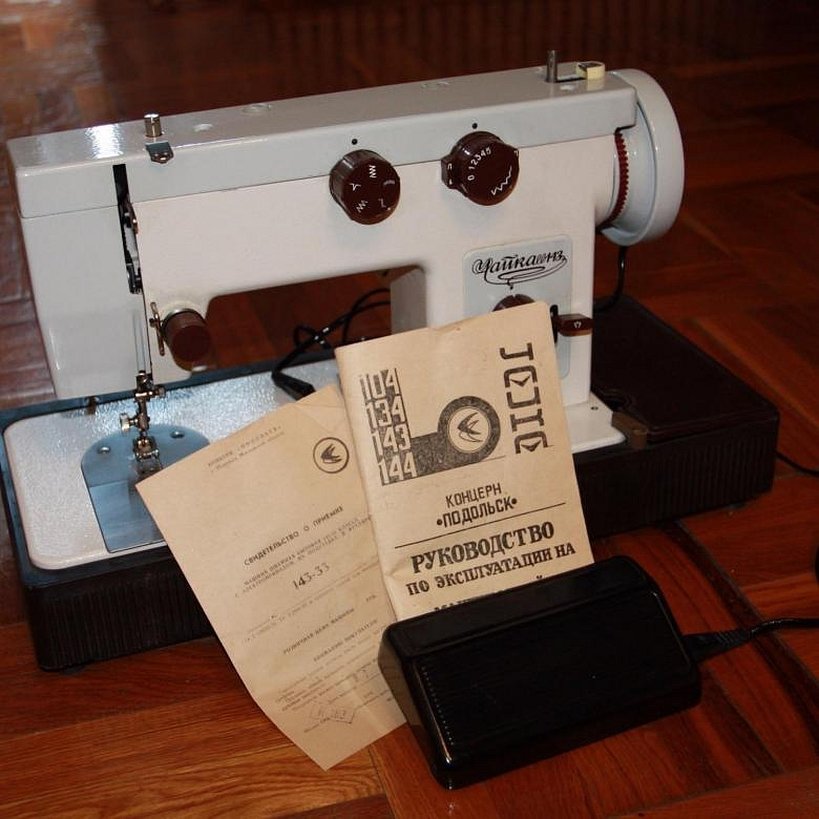
The machine "Chaika 143" is designed for home use. It can sew, darn, embroider. It can work on thick fabrics. The model is time-tested. When used correctly, it works without interruptions. It is important to thread the thread and install the needle correctly.
Main characteristics
The technical data of the machine are presented in the operating instructions. Many points will mean nothing to a beginner seamstress. But it is important to know about the threads and needles used.
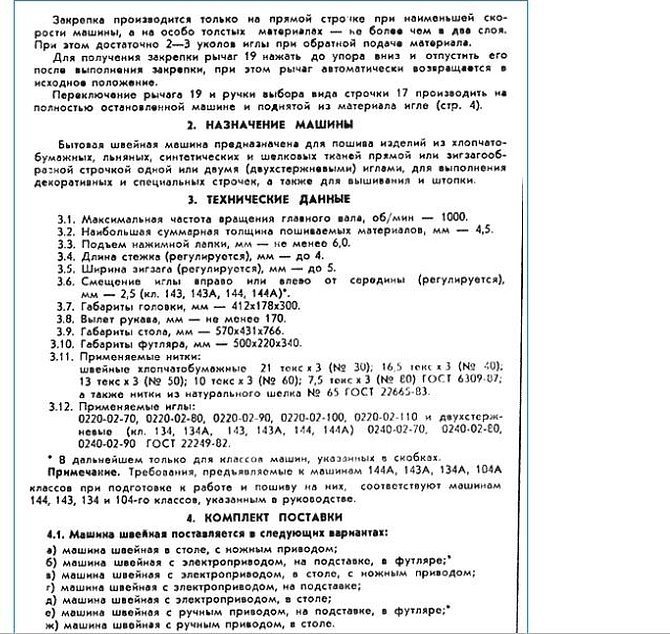
Main technical data of the sewing machine:
- The rotation frequency of the main shaft is up to 1,000 revolutions.
- Maximum material thickness – 4.5 mm.
- Zagzag width – up to 5 mm.
- Needle displacement is no more than 2.5 mm.
- Threads – cotton (numbers 30, 40, 50, 60). Silk – number 65.
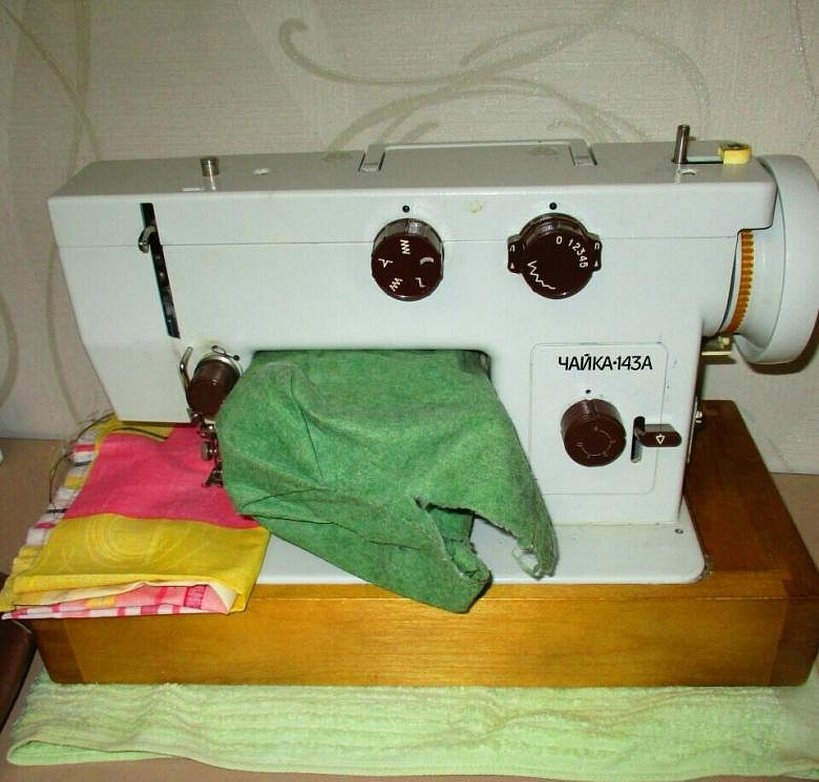
The sewing machine "Chaika 143", like "Chaika 143a" supports needles 0220-02-70, 80, 90, 100. And also two-rod 0240-02-80, 90. The use of other materials can lead to malfunction of the machine components.
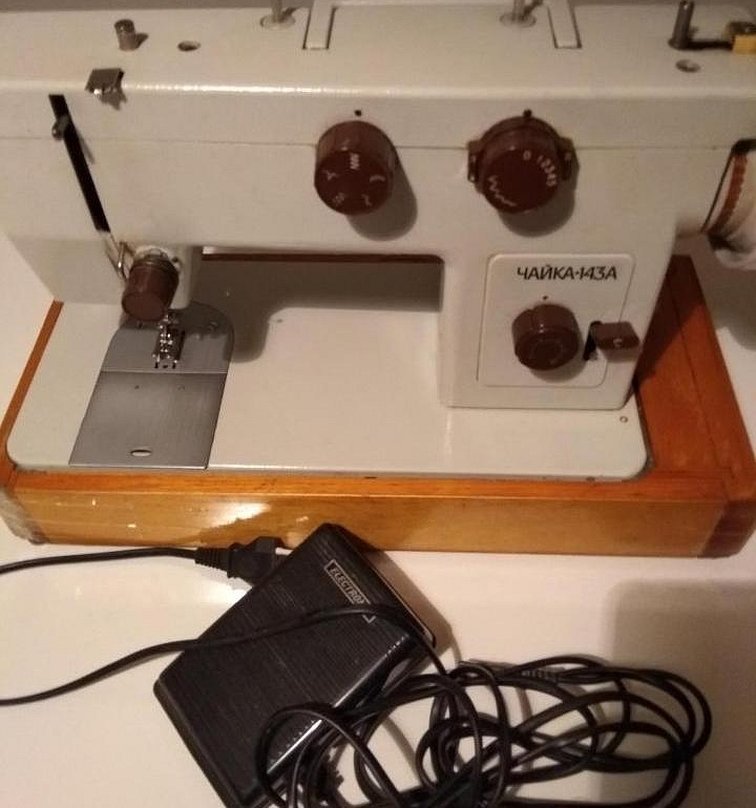
The listed threads and needles are not only used for one model. This is explained by the similar design of several variations of "Seagulls".
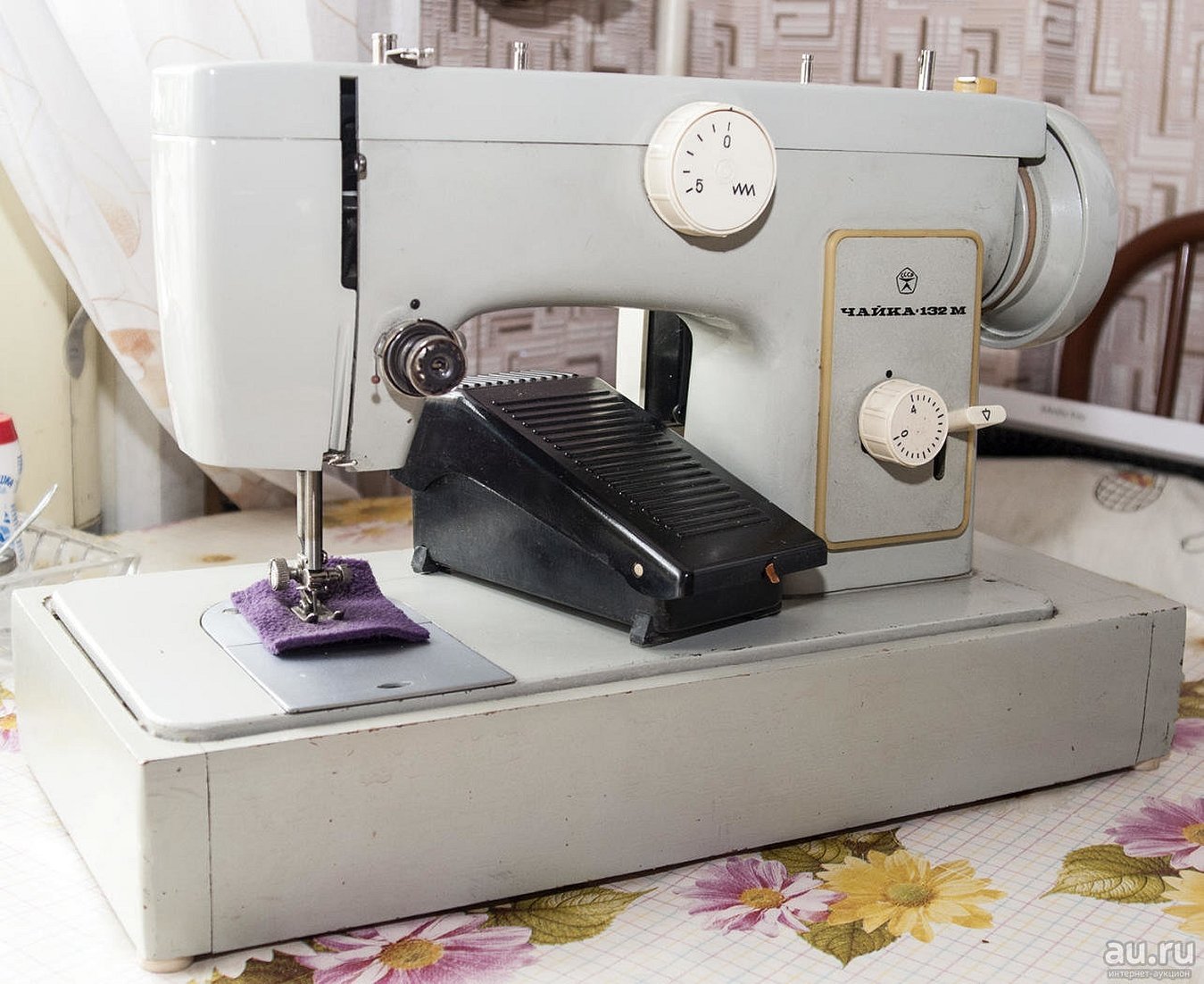
Delivery set
There are more than 5 delivery kit options. This allows the seamstress to choose the best one for placement at home and work features. There is a delivery of the machine in the table. You can buy a device on a stand for small spaces.
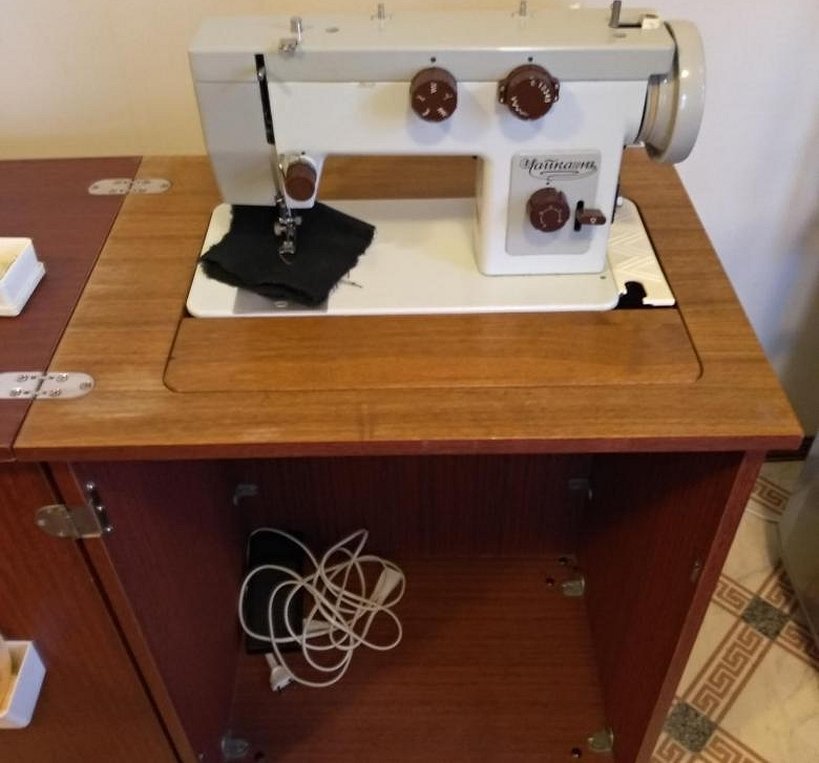
Delivery set options:
- a device with a foot drive in the table. Convenient if there is no place to store sewing accessories. And the machine does not require frequent rearrangement. The foot drive has some disadvantages;
- electric machine without a table on a stand. Sold in a case. Saves space. But fabrics and other accessories will still require additional space. Easy to carry;
- option with electric drive in the table;
- a hand-operated device on a stand.
The case for the machine can be soft. In this case, it is additionally placed in a packing box.
Important! The lubricant must be used according to the rules specified in the instructions. The substance must be intended for use in the model. And also meet other requirements.
The machine also comes with an instruction manual. A set of accessories is included in the packing box. There must be a certificate with a warranty card. Electric machines are supplied with a connecting cord. If the control is foot-operated, a belt is added. Screws must also be included. When buying a used machine, you need to specify the kit.
You can buy the machine in a table or on a stand. There are also options with electric and foot drive. When buying a device from someone else, you need to check the availability of a manual for proper operation.

Controls in the Chaika-143
The machine is easy to understand. But it has many controls. You need to understand how each of them works. The operating instructions list 27 components. Each of them is important for smooth sewing.

Machine components:
- The shuttle device is the main part of the sewing machine. The quality of work depends on its type and settings;
- material engine – the part that allows the fabric to move;
- needle plate – located under the needle and presser foot;
- presser foot;
- needle threader;
- presser foot lifting lever;
- light switch;
- thread guide;
- winder tension unit;
- 2 reel stands;
- winder;
- flywheel;
- needle shift handle;
- zigzag width regulator;
- panel;
- stitch change handle;
- fastening lever;
- stitch length regulator;
- material engine lifting control;
- sliding plate;
- 3 thread guides;
- thread tension regulator;
- thread take-up.
Each component of the machine has a meaning in operation. It is necessary to understand the purpose and sequence of adjustment of the elements.

Preparing for work
When preparing for work, it is important to remember the sequence of actions. Depending on the type of drive, it will change. After several settings, you can remember the algorithm. And it takes much less time. The operating instructions tell you how to prepare the sewing machine "Chaika 143".
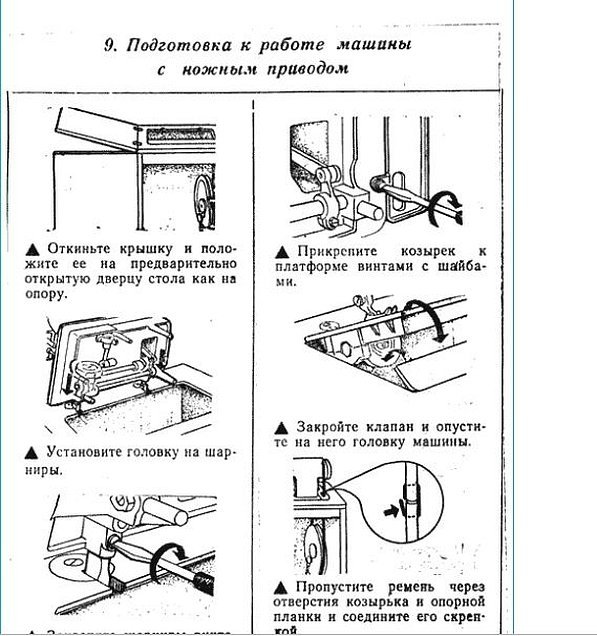
Sequence of actions:
- Open the lid and door (it is recommended to use the door as a support).
- Install the head.
- Fix it to the panel.
- Close the valve and lower the head.
- Pass and fasten the belt.
- Connect the light.
- Turn the friction screw in the direction of the arrow.
- Set the flywheel in motion using the pedal.
- Tighten the friction screw for the working stroke.
Important! For the smooth operation of the device, lubrication with oil must be carried out in a timely manner.
Setting up sewing step by step:
- Turn the handwheel to set the thread take-up to the upper position.
- Insert the needle and secure with a screw.
- Turn the flat side of the flask towards the paw rod.
- Raise the paw.
- Pull out the rod. Put in the coil.
- Thread the thread from the spool through the thread guide into the thread take-up lever.
- Open the plate.
- Remove the cap and bobbin.
- Loosen the screw.
- Wind the threads onto the bobbin. Install it.
- Thread the thread.
- Thread the bobbin case.
- Tighten the friction screw.
- Lower the needle and lift it up.
- Remove the shuttle thread.
- Thread the threads under the foot.
- Adjust the engine lift according to the material.
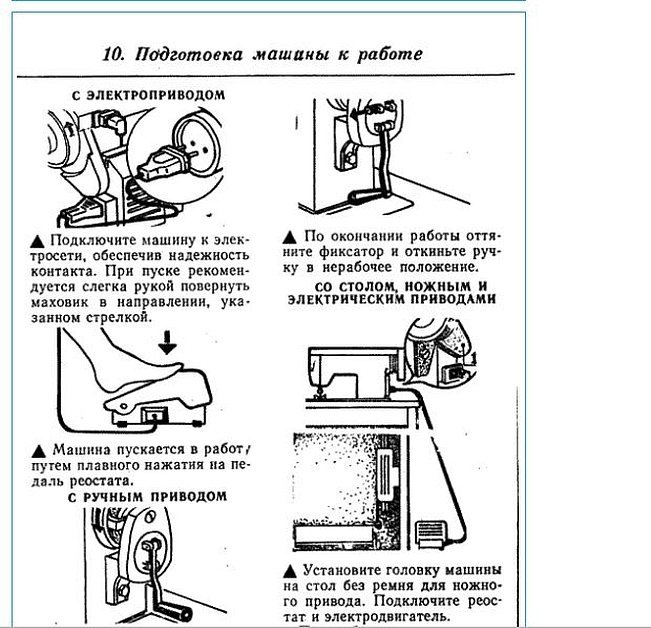
It is important to properly prepare the machine for the sewing process. This will contribute to many years of work with the device and high-quality sewing. It is easy to remember the algorithm.
Malfunctions and repairs
Machine repair is complicated by the fact that there are no special service centers. In case of breakdown, you will have to independently look for a master who has experience working with devices that were released quite a long time ago.
Most of the time, malfunctions occur due to improper use of the machine. Each type of malfunction has a probable cause.
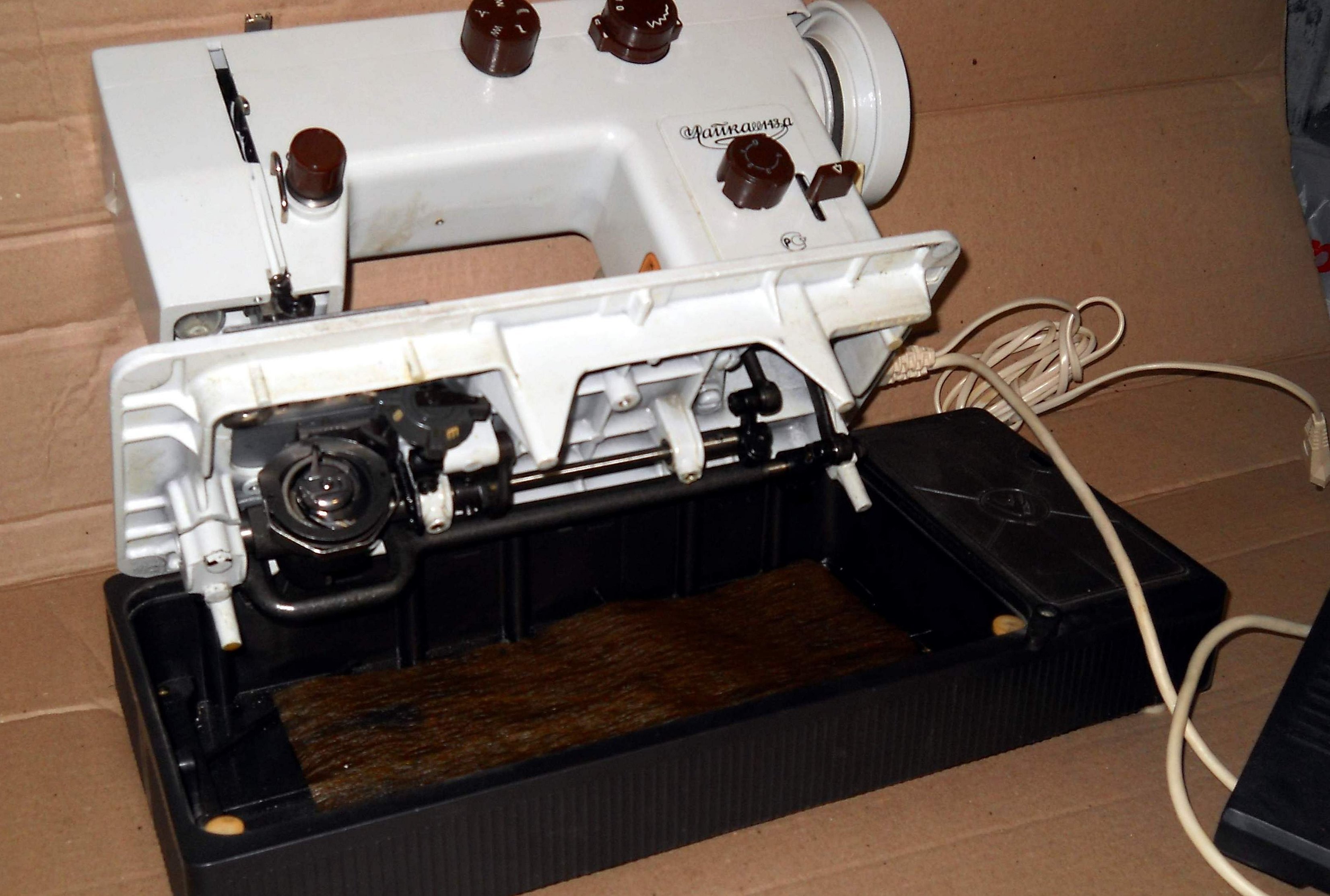
Breakdowns, causes and fixes:
- Needle breakage occurs due to incorrect position of the foot, violation of the rules for selecting needles for fabrics. The skills of the seamstress also play a role. In this case, it is recommended to change the needle, correctly install the foot, pay attention to the selection of needles in accordance with the threads and fabric.
- Skipping stitches occur due to incorrect needle installation or incorrect needle selection. It is recommended to replace the needle and threads. Pay attention to the compatibility of all sewing materials with each other.
- The machine does not feed the material or does it poorly due to insufficient fabric pressure. To fix this, turn the foot rod screw clockwise.
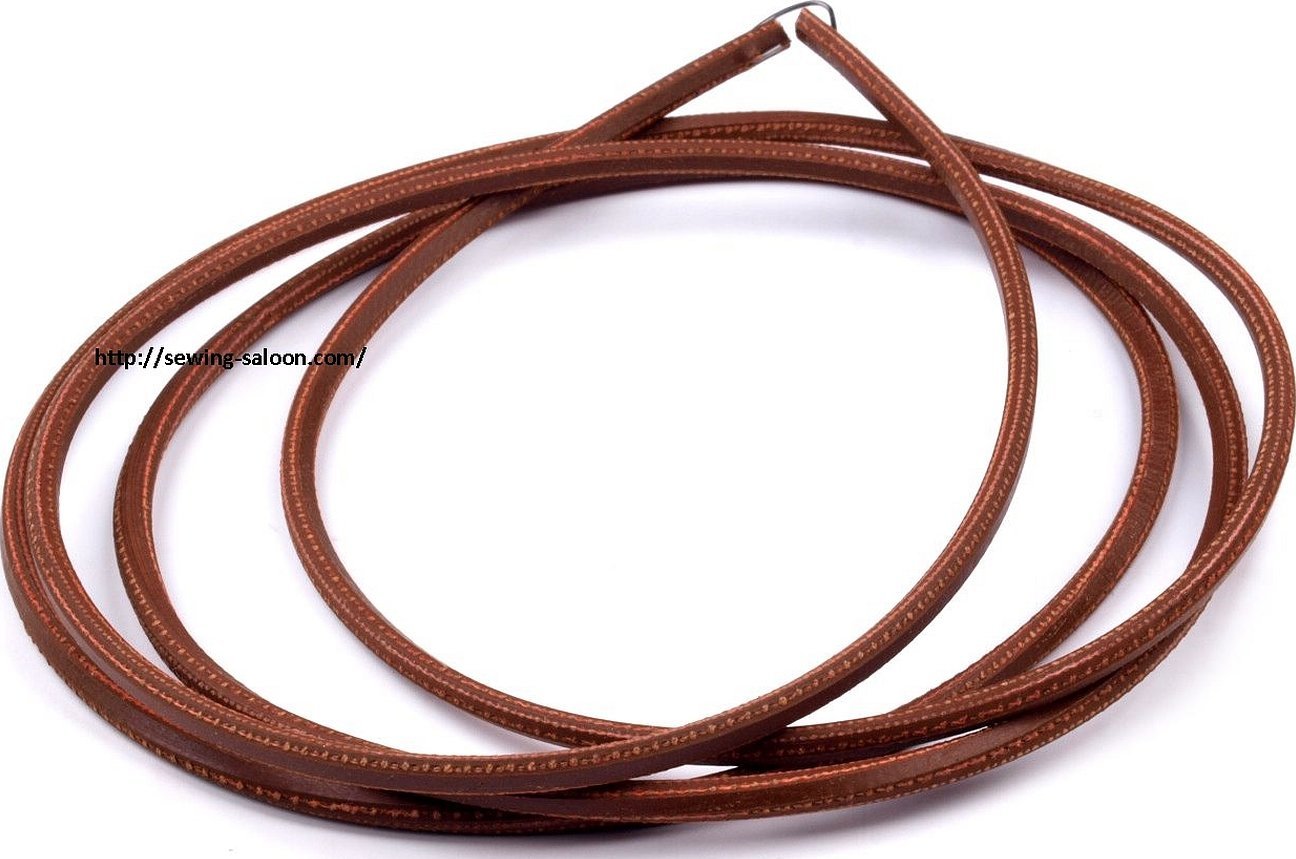
Often there is a problem of slipping of the drive belt. This happens as a result of its weakening. This happens over time. It is necessary to shorten it. Or adjust the tension according to the instructions.

The Chaika sewing machines still serve needlewomen at home. They are capable of working with heavy fabrics, can embroider and darn. To extend the service life, it is important to select the right needles, threads, fabrics. And also to lubricate the device in a timely manner. It is also important to learn how to properly prepare the machine for the sewing process, then this old but reliable device will serve for a long time and will save the owner a lot of money, which she would otherwise have to pay for sewing in a studio.




